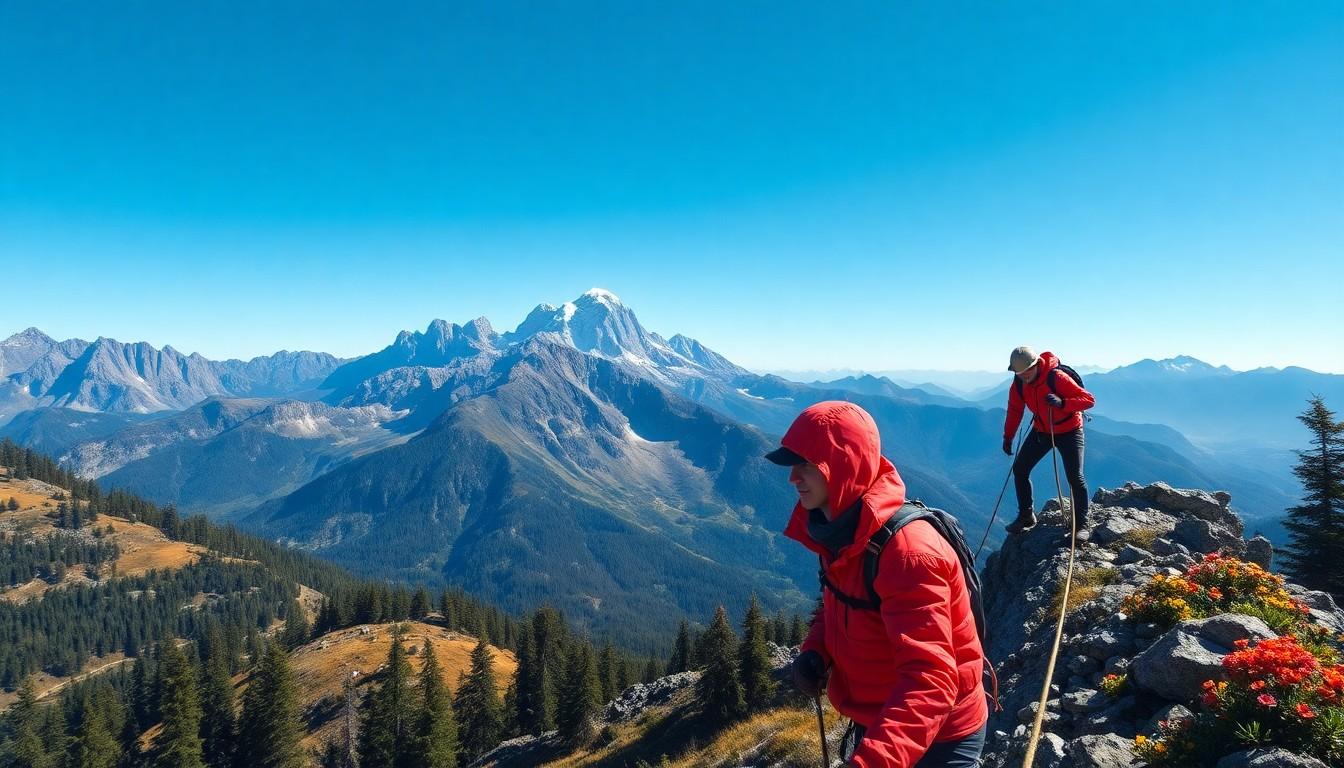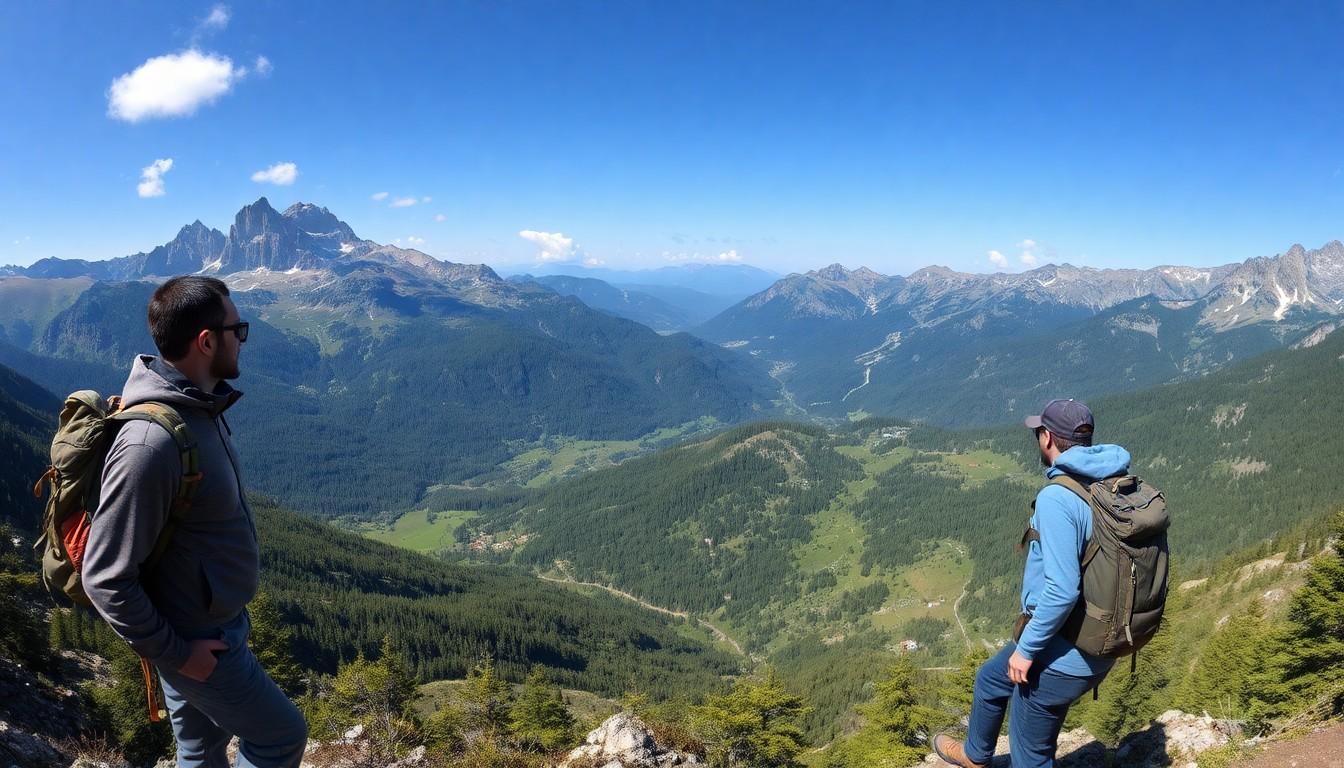The Best Fluffy Pancakes recipe you will fall in love with. Full of tips and tricks to help you make the best pancakes.

How High Is the Mountain Kamaneton? Discover Its Altitude and Climbing Secrets
Nestled in the heart of nature’s playground, Mountain Kamaneton stands tall and proud, challenging adventurers to discover its secrets. But just how high is this majestic giant? If you think you can conquer it without knowing its altitude, think again! It’s like trying to bake a cake without knowing the oven temperature—utterly impossible and likely to end in disaster.
Overview of Mountain Kamaneton
Mountain Kamaneton rises to a notable height of 3,800 meters above sea level. This significant altitude attracts climbers and nature enthusiasts from around the globe. Each year, thousands seek the thrill of scaling its challenging slopes. The mountain is part of the greater Kamaneton range, located in the heart of a picturesque national park. Its rugged terrain features steep cliffs and rocky outcrops, offering obstacles for climbers.
This mountain’s allure lies not just in its height but also in its diverse ecosystem. Visitors encounter various flora and fauna unique to the region, enhancing the adventure. Reaching the summit grants breathtaking views of the surrounding landscape, showcasing valleys and other peaks. Adventurers often brave the ascent during different seasons, each offering distinct challenges and experiences.
Climbing Mountain Kamaneton requires careful planning. Weather conditions can change rapidly, impacting visibility and trail safety. Many climbers recommend obtaining updated weather reports before embarking on the journey. Gear selection plays a crucial role too, as appropriate clothing and climbing equipment can influence the success of the ascent.
Local guides, familiar with the mountain’s trails, can provide invaluable assistance. Engaging with a guide ensures a safer and more enriching experience. Maps and other resources help climbers navigate, but firsthand knowledge proves essential. Understanding the mountain’s intricacies enhances not only the climb but also appreciation for Kamaneton’s natural beauty.
Geographical Location

Mountain Kamaneton sits at the heart of a scenic national park, nestled within a captivating range. Its geographical coordinates place it prominently within the region, making it an attractive destination for outdoor enthusiasts.
Regional Significance
The Kamaneton range holds considerable ecological and cultural importance. Home to diverse ecosystems, it supports various wildlife species and unique plant life. Additionally, local communities often celebrate the mountain through cultural events, connecting visitors to regional heritage. The national park surrounding Mountain Kamaneton draws attention from tourists, contributing significantly to local economies. Various research initiatives highlight the area’s environmental significance, emphasizing conservation efforts.
Accessibility and Trails
Accessing Mountain Kamaneton requires navigating well-maintained trails suited for varying skill levels. Popular starting points for climbers include nearby towns offering amenities and local guidance. Trail systems connect different routes, providing choices for both novice hikers and seasoned climbers. Marked paths lead through stunning landscapes, showcasing the mountain’s rugged beauty. Weather conditions can affect trail safety, underscoring the need for up-to-date forecasts. Additionally, guided tours are available, enhancing the outdoor experience and ensuring safer navigation of the terrain.
Elevation and Measurement
Mountain Kamaneton stands at a remarkable elevation of 3,800 meters above sea level. Knowing its height plays a crucial role in climbing strategies and preparations.
Historical Data on Height
Historical measurements of Mountain Kamaneton’s elevation date back to the early 20th century. Initial surveys estimated its height at approximately 3,700 meters. Over the years, advancements in surveying techniques contributed to accurate heights adjusting it to the current figure of 3,800 meters. Climbers often reference these historical values when planning their ascents, ensuring they understand the mountain’s imposing presence throughout time.
Current Measurements and Technology
Current measurements of Mountain Kamaneton utilize state-of-the-art technology. GPS systems and laser altimetry provide precise elevation readings, improving measurement accuracy. Climbing organizations frequently employ these modern tools for safety and efficiency. Real-time data availability enhances climbers’ awareness of changing conditions. Utilizing such technology becomes essential for those attempting to navigate the mountain’s rugged terrain.
Flora and Fauna
Mountain Kamaneton hosts a rich variety of flora and fauna, showcasing unique ecosystems. Diverse habitats range from alpine meadows to dense forests. Climbers frequently encounter an array of plant species, including colorful wildflowers and towering conifers. These ecosystems support various wildlife, contributing to the mountain’s ecological richness.
Unique Ecosystems
Mountain Kamaneton’s ecosystems vary with elevation. At lower altitudes, tropical plants thrive, creating a vibrant undergrowth. Vegetation shifts as one ascends, transitioning into hardy shrubs and resilient grasses at higher elevations. This remarkable diversity attracts researchers and nature lovers alike, fostering a deeper understanding of ecological relationships.
Endangered Species
Endangered species inhabit the mountain, highlighting the need for conservation efforts. For instance, the elusive Kamaneton snow leopard, facing habitat loss, roams the rocky cliffs. Bird species, such as the rare Alpine chough, nest in crevices, showcasing the mountain’s avian diversity. Protection of these species supports overall biodiversity, ensuring the survival of Kamaneton’s unique wildlife.
Climbing Experience
Climbing Mountain Kamaneton offers a rewarding adventure for all who take on its heights. Many climbers find the journey both challenging and spectacular, with stunning views awaiting at the summit.
Best Time to Visit
The ideal months to climb Mountain Kamaneton typically fall between May and September. During this period, climbers experience milder weather and clearer skies, enhancing visibility and safety. Temperatures range from 10°C to 20°C, making the ascent more manageable. Rainfall remains minimal, further supporting enjoyable trekking conditions. Climbers often report the most vibrant flora and wildlife sightings in August. Planning a trip around these months increases the chance of favorable climbing experiences, allowing for optimal exploration of the mountain’s unique ecosystem.
Safety Tips for Climbers
Safety becomes paramount while climbing Mountain Kamaneton. First, checking weather forecasts prior to departure helps identify potential hazards. Climbers should also pack essential gear, including sturdy footwear and layers for variable temperatures. Carrying a first-aid kit is advisable in case of any minor injuries. Utilizing local guides proves beneficial for navigation and receiving insights about the terrain. Staying hydrated is critical, as high altitudes can exacerbate dehydration. It’s vital to inform someone about the climbing plan, adding an extra layer of security. Each of these measures fosters a safer experience on this magnificent mountain.
Conclusion
Mountain Kamaneton stands as a testament to nature’s grandeur at 3,800 meters above sea level. Its challenging terrain and breathtaking views make it a prime destination for adventurers seeking both thrill and beauty. The mountain’s diverse ecosystems and rich wildlife further enhance its allure, inviting climbers and nature enthusiasts to explore its depths.
Planning is essential for a successful ascent. Climbers must be prepared for the mountain’s unpredictable weather and ensure they have the right gear. Engaging local guides can also enrich the experience, providing insights into the mountain’s unique features. With the right preparation, Mountain Kamaneton promises an unforgettable journey into the heart of nature’s splendor.
